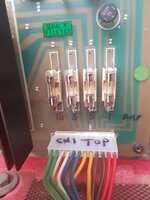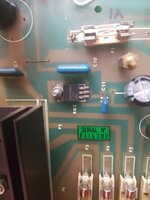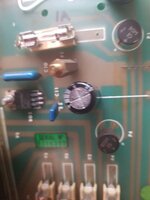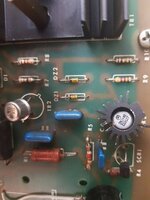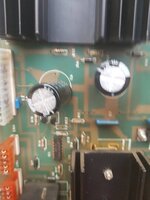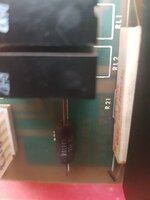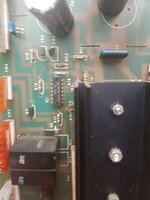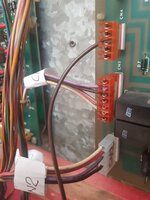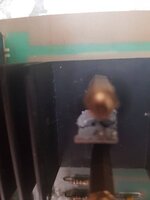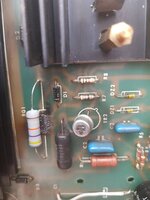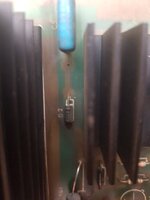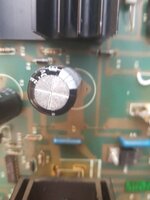OK. They fit exactly as the present ones are fitted. The middle leg of the TIP49 is probably cut off as it make its connection through the bolt in the tab.
Once fitted then unplug CN5 before powering up and measure the voltage between the screw head at the bottom of the board (black probe) and Pin 8 of CN5 (red probe) looking for 160 - 175V DC before it is safe to power off and reconnect CN5 to try the game again. Don't forget to check CN10 and CN11 on the CPU board for correct alignment and no bent pins too. Good luck, you are making good progress and no doubt learning a lot too.
Once fitted then unplug CN5 before powering up and measure the voltage between the screw head at the bottom of the board (black probe) and Pin 8 of CN5 (red probe) looking for 160 - 175V DC before it is safe to power off and reconnect CN5 to try the game again. Don't forget to check CN10 and CN11 on the CPU board for correct alignment and no bent pins too. Good luck, you are making good progress and no doubt learning a lot too.


